It’s common knowledge for most succulent lovers that succulents and cacti are capable of going long periods of time without water. They can thrive in environments where most plants wouldn’t survive. So, how long can they go without water?
Well, that depends on a few different factors, but first, it’s important to understand how succulents are capable of surviving such long periods of drought in the first place.
Jump to:
How Can Succulents Survive Without Water?
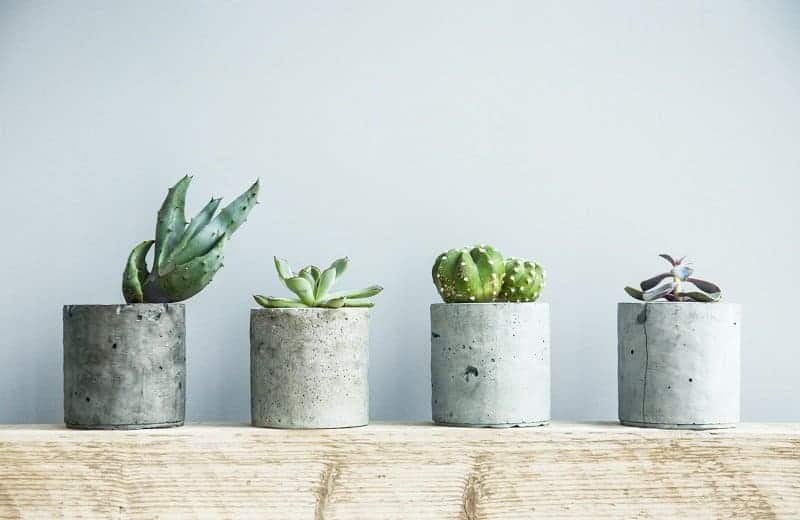
Any succulent lover knows that succulents can handle a much longer period of time without water than the average houseplant. But how exactly do they do it? Well, succulents have adapted to their arid environments and have become experts at staying hydrated during droughts.
For starters, succulents tend to absorb water much more quickly than most species of plants. In the desert environments that most succulents are native to, water evaporates quickly and rarely penetrates deep into the soil.
So, in order to absorb as much water as possible when the opportunity arises, many species of succulent grow extensive root systems that spread out just below the surface rather than growing deep into the soil. This way the plants can still absorb the water even if it only sinks into the soil by an inch or two.
Once they absorb that water, the succulents will need to hold onto it for as long as possible, since it’s hard to say when it will rain again. To retain their precious water, succulents have developed an incredible storage system.
The surface, or epidermis, of all species of plants, including succulents, are covered in miniscule pores that allow the plants to exchange gasses for photosynthesis. These pores are called stomates. Unfortunately, stomates are a major source of water loss for most plants.
Succulents, however, have adapted by forming fewer stomates. Additionally, the thick, fleshy leaves of many species are ideal for water storage and reduce the surface area to minimize water loss. Some species don’t grow any leaves, further minimizing their surface area and potential loss of moisture.
Some species also have a waxy coating on the leaves called farina, which can help seal in water and prevent water loss through evaporation.
Finally, many species of succulents, especially cacti, have adapted to their waterless environment by growing prickly spines, toxic sap, or blending into their surroundings. This keeps them safe from the thirsty animals that share the same harsh environments.
Affecting Factors
As previously mentioned, the length of time that succulents can go without water depends on a few different factors. In fact, different species will have different levels of tolerance in terms of drought and even the toughest succulents have their limits.
To determine how long your favorite species of succulent might be able to live without water, we’ll need to consider a few different elements of our beloved fat plants. Different species are used to growing in different climates, so they’ll have different tolerance levels for drought.
No matter what species you have, the severity of the season and the exact location of the plant in question will have an effect on how long that succulent can live without water.
Species and Age
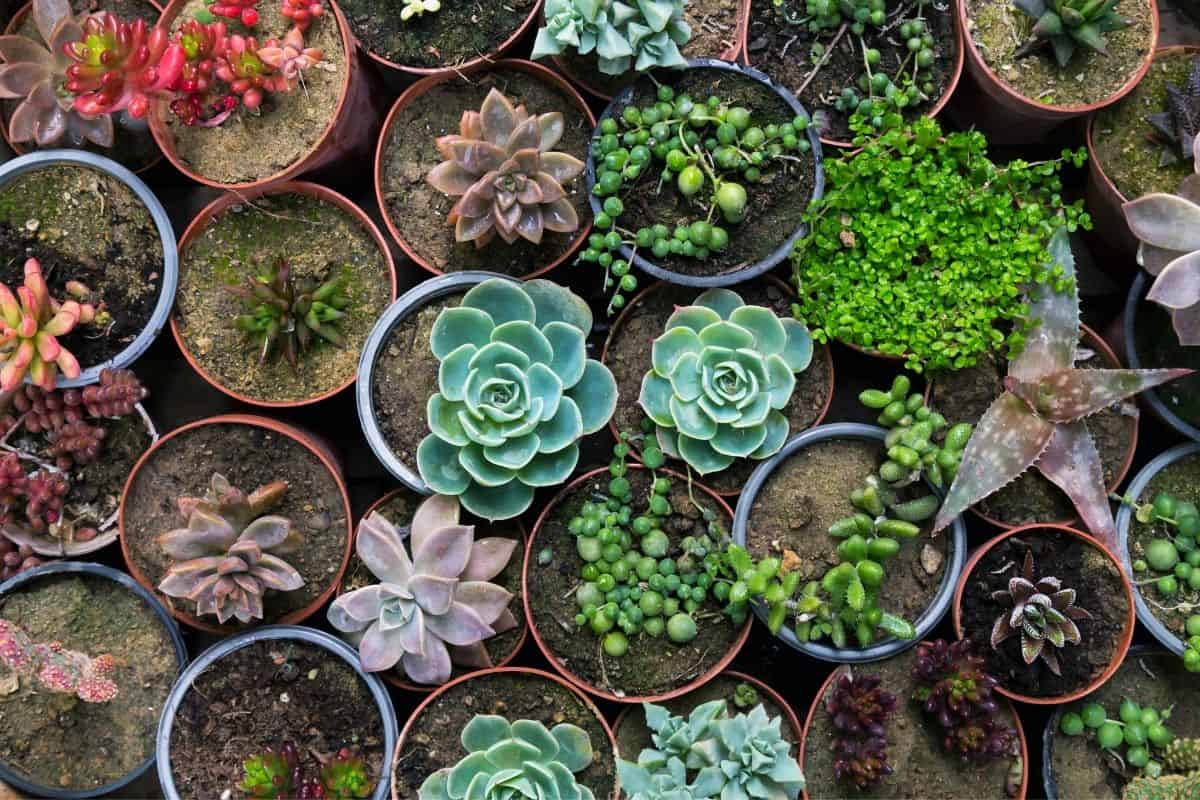
Succulents are a huge category of plants with incredible variety. As such, it’s difficult to give an exact amount of time that they can go without water. Succulents that can survive the longest will be more compact, with thicker stems and leaves. They’ll have less surface area from which to lose moisture.
Succulents with small, thin leaves won’t be able to go more than a month or two without water. This is because they simply aren’t able to retain enough water to stay alive in their thin leaves. Thin leaves also have more surface area, so more stomates, to lose water from.
Some types of succulents, such as Graptopetalum or Crassula, can go up to three months without water before they are shriveled enough to be unable to recover. However, there are also certain species of cacti that are capable of surviving six months or more without water. Succulents such as Lithops can survive with water just a few times per year.
In addition to the individual species, the age and size of a succulent can affect how long it can go without water. Big, old established plants will be able to go much longer periods of drought than young succulents with delicate root systems.
New cuttings or seedlings can be especially susceptible to drying out, so you may find yourself watering your young plants much more frequently than older plants with established root systems.
Season
The most obvious difference in a succulent’s ability to survive certain seasons is the temperature. Succulents will lose more moisture during hot weather than they do in cooler months.
No products found.
The warmer a climate is, the more quickly water evaporates from not only the soil, but from the plant itself. This is why you may find yourself watering your succulents more frequently during hot weather than you do the rest of the year.
Additionally, some species of succulents go through periods of dormancy during the year. Dormancy typically occurs in the winter months, but some species such as Aeonium go dormant in summer.
If you’re unfamiliar with the concept of dormancy, it’s quite simple: it’s a temporary period of time during which the plant experiences slowed growth. You’re probably more familiar with dormancy in trees, where they lose their leaves each winter and regrow them in the spring once active growth begins again.
Visibly, you’re unlikely to see much difference between a dormant succulent and one that is actively growing. Since succulents have such limited access to water in the first place, they can’t really afford to lose a lot of their leaves only to regrow them again. Plus, they need those leaves for water storage.
During dormancy, succulents are not actively growing much, so they don’t need as much water. Many species are capable of surviving three months or so of dormancy with little to no water. Plants that go dormant in summer, however, may need a bit more water to help them cope with the summer heat.
In succulents, dormancy is typically caused by three environmental factors: temperature fluctuation, light levels, and water availability. So, during particularly dry seasons, succulents simply go dormant as a way to cope with the lack or near lack of water.
Location
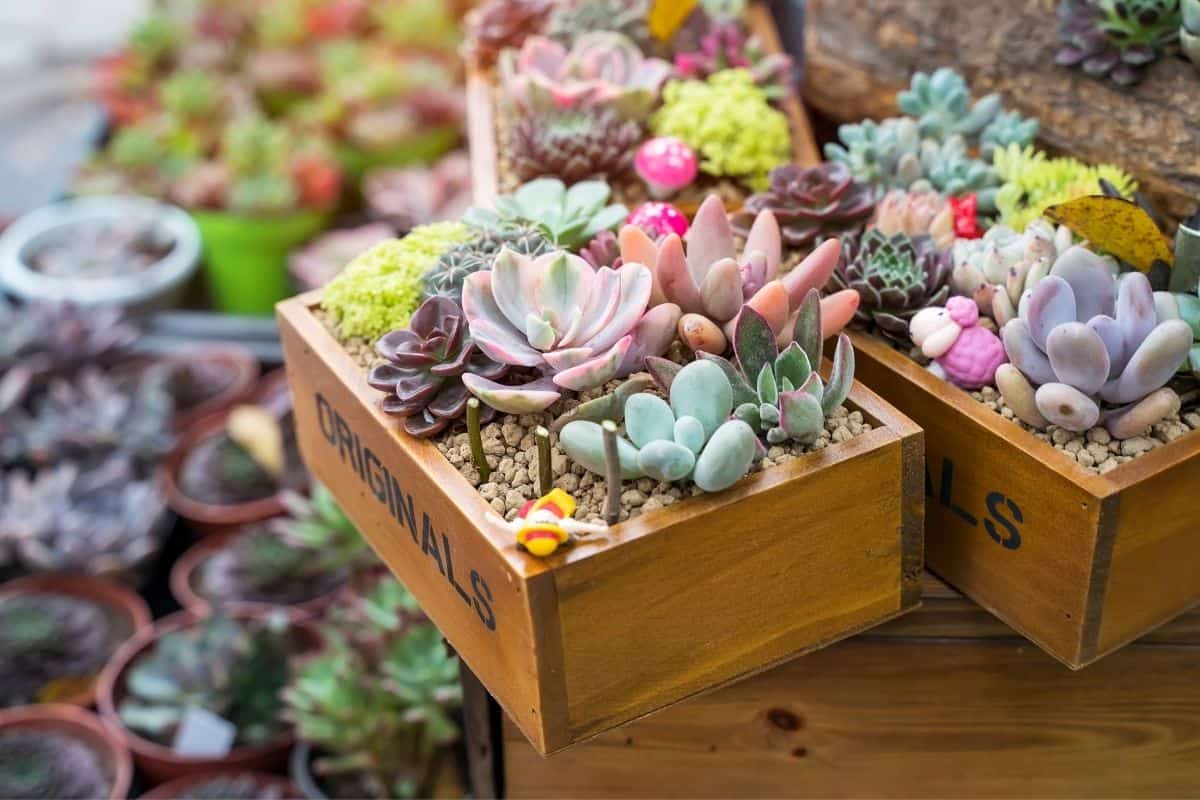
The area where a succulent is growing will also have an impact on how long it can go without water. Obviously, succulents that are planted outdoors in full sun are going to need water more frequently than those indoors in filtered light.
Remember, warmer weather will cause more water loss, so the more extreme an environment is, the more quickly a succulent is going to lose water. So, the milder your climate is, the more likely it is that your succulents can survive a longer period of drought.
If you leave your beloved succulent in full sun in Arizona while you go on vacation for the entire summer, depending on the species, it may not be alive when you get back. However, if you had left that same plant in your air-conditioned home with partial shade, your chances may be better.
That being said, an indoor room with plenty of shade might be ideal for minimizing water loss, but it might not provide the ideal light levels for the type of plant you’re trying to grow. Thankfully, indoor plants rarely need to go into full survival mode unless you really forget about them.
Your succulents’ ability to survive will also depend on what type of container you have it planted in. Small or shallow pots will obviously dry out much more quickly than large, deep containers.
Similarly, dark colored pots will likely get hotter when exposed to the sun, which will increase the rate of evaporation. Succulents planted in the ground, as opposed to in pots, will be able to survive longer periods of time as the soil won’t dry out quite as quickly.
Even the material that your pots are made out of will affect the rate of water loss. Whether you plant your succulents in terracotta or plastic pots, you should be aware of the differences in material.
Terracotta pots are capable of absorbing water from the soil inside, so they can be helpful in preventing overwatering. However, in warm weather those terracotta pots just might absorb too much of the moisture in the soil, which means the plant inside will need to be watered more frequently.
Plastic pots, on the other hand, will not absorb excess water from the soil, but darker colored pots may heat up and cause the moisture to evaporate more quickly. There are pros and cons to each type of pot you use, so it’s important to evaluate your needs and choose accordingly.
It’s crucial to take all of these factors into consideration when deciding how often to water your succulents. This will mean keeping a close eye on your succulents and their soil and adjusting throughout the year. Remember, succulents are low-maintenance plants, but they aren’t any maintenance.
How Often Should You Water Succulents?
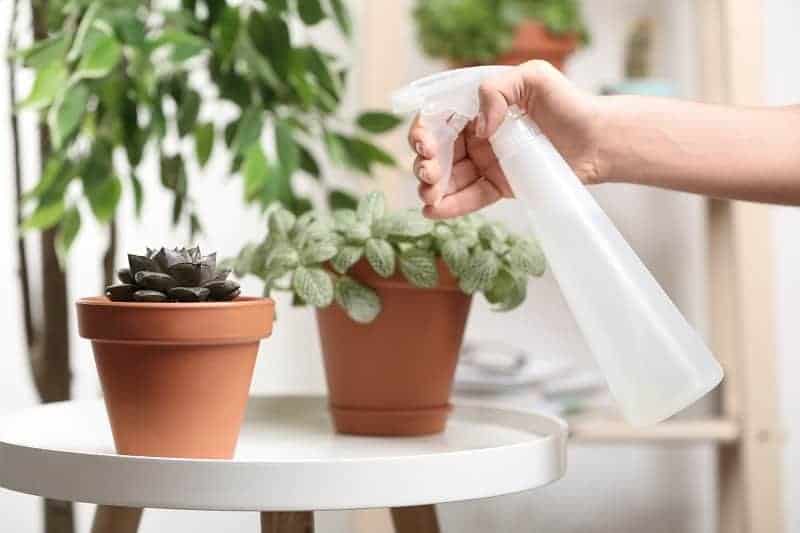
As you may have gathered already, there is no exact answer on how frequently you should water your succulents. It will depend on where you plant your succulents, what species they are, and what the weather is like.
A general rule of thumb is to water your succulents every seven to ten days, but this may need to be adjusted according the needs of each of your individual plants. While you should be able to keep most of your plants on a similar watering schedule, take note of which ones need more or less and adjust your schedule accordingly.
In warm, dry seasons, you’ll obviously need to water your succulents far more frequently than you would during that succulent’s winter dormancy period. This is why it’s important to monitor the moisture levels of the soil your succulents are planted in.
It’s generally recommended to only water your succulents once the soil has dried out. You’ll need to check the soil below the surface, by about an inch or two. It’s common for the surface to dry out much faster than the center of the pot, so you’ll need to check by inserting your finger into the soil or using a soil moisture meter.
Although most species of succulents and cacti can survive long periods of time without water, few can survive long periods of time in standing water. So be sure that you’re watering your succulents as often as they need, but not so much that you risk overwatering them.
The Dangers of Overwatering
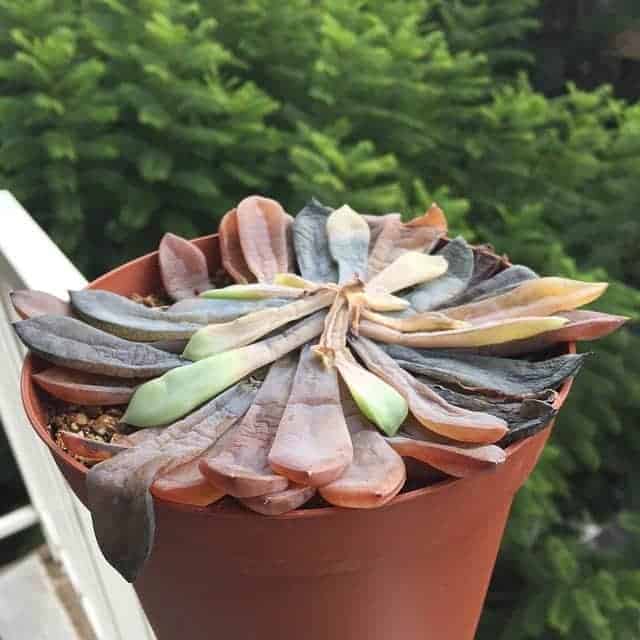
One of the biggest dangers you face with overwatering your succulents is root rot. Though root rot can have a variety of specific causes, it’s most often caused by overwatering. Simply put, your succulent’s roots will begin to decay if they aren’t allowed to dry out between watering.
Unfortunately, root rot is not curable, so unless you catch it in its early stages, your plant likely will not survive. However, it’s difficult to detect root rot early as the initial symptoms are only seen in the roots below the soil surface. As symptoms begin to appear on the plant’s stem and leaves, the rot becomes more life-threatening for your plant.
Remember, succulents are used to living in dry desert locations, so the swampy environment of an overwatered pot is going to cause problems. Succulent roots also need oxygen, so even if the roots don’t begin to rot, they’re not going to be able to breathe.
Though root rot tends to be sneaky, your succulent will definitely let you know if you’re giving it too much water. Most often, the lower leaves will begin to yellow and will eventually fall off. The leaves may take on a mushy feeling if overwatering is continued.
In most cases, it’s better to err on the side of dryness than risk overwatering your succulent. If you aren’t completely sure whether your plant is ready for more water, it’s best to wait a couple days before watering.
A few days won’t affect your plant’s health, since succulents are capable of surviving for much longer without water, but it may help prevent the damage done by overwatering.
Ideal Conditions for Succulents
While succulents are capable of withstanding long periods of drought, they will look and grow best if you provide them with everything they need. This includes giving them the right soil and sunlight, as well as water at the appropriate intervals for each species.
Soil
Planting your favorite succulents in the correct soil will not only provide them with the oxygen their roots need to thrive, but it will also help you give them the right amount of water when they need it.
Well-draining soil formulated for use with cacti and succulents will have larger particles than most potting soils. They may include gravel, sand, perlite, or even bark. This will allow for better drainage and less water retention. It will also help to prevent soil compaction, which means better airflow around your succulents’ roots.
Sunlight
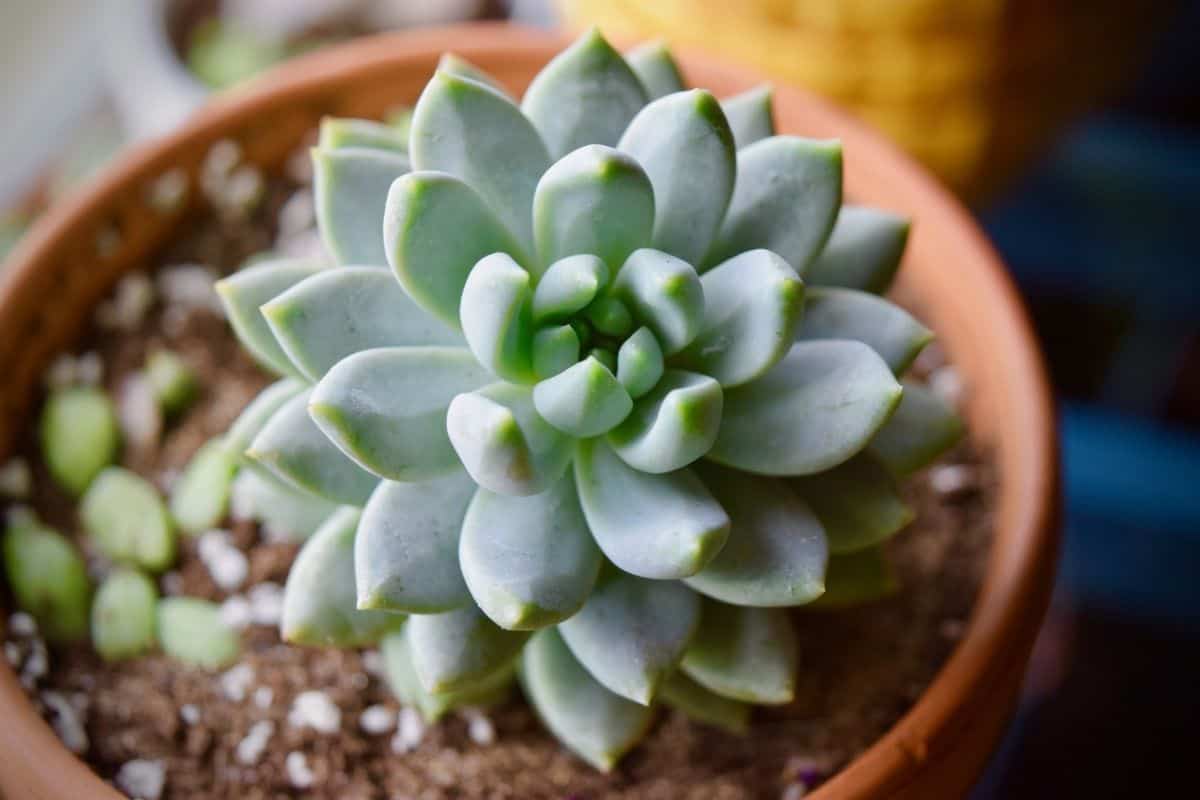
Most succulents prefer bright light, but it’s important to place your succulents in areas that will suit each species best. Some succulents, such as cacti, will thrive in full sun no matter the season. For others, this may result in sunburn.
You’ll need to watch your plants closely to make sure they’re getting enough light, but not so much that they get burned. Of course, you can always supplement with a grow light if you feel your plants aren’t getting enough light from your apartment or office window.
Remember, as you change your succulent’s light levels, you also need to keep an eye on soil moisture to make sure you’re not watering your plants too much or too little.
Water
As we’ve said before, proper watering techniques are one of the most important aspects of succulent care. Once you’ve developed a thorough understanding of how succulents absorb and store water, you’ll have more success with your green thumb.
If you need more information on the factors that affect how often you need to water your succulents, check out our guide to watering succulents and cacti here.
Know Your Succulents
Whether you’re a new succulent gardener or an experienced cactus caretaker, you need to be sure that you research each and every plant you bring home to make sure you’re providing it with its ideal care.
The more you know about your succulents and cacti, the better you’ll be able to take care of them. This includes knowing how much light and water they prefer as well as if they have any particular needs in terms of soil or nutrients.
Additionally, you’ll need to know when that particular species experiences dormancy, if at all, so that you don’t end up giving it more water than necessary.
The research you do on each of your new plants will help you care for them correctly and will result in bigger, better, more beautiful succulents and cacti.
You Might Also Like:

